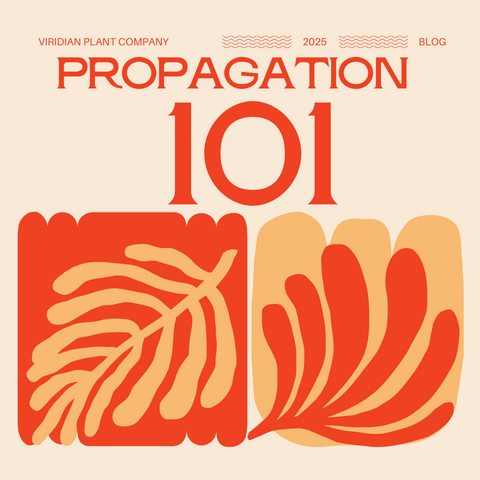
You water, you prune, you give your plant the perfect window spot—and then, suddenly... something's off. Yellowing leaves? Sticky residue? Tiny bugs? Don’t panic—it might just be a few uninvited guests. 🐛
Houseplant pests are more common than you’d think, and the good news is: they’re treatable! This guide will help you identify common pests, learn how to treat them naturally or chemically, and protect your plants moving forward.
Common Houseplant Pests & How to Spot Them
Spider Mites - Our Favorite Product Here
-
Signs: Tiny webbing, speckled leaves, dry/stippled look
-
Where: Undersides of leaves
-
Bonus tip: Shake a leaf over white paper—if dust crawls, it’s mites
Fungus Gnats - Our Favorite Product Here
-
Signs: Small black flies near soil surface
-
Where: Moist topsoil
-
More annoying than damaging—but they multiply fast!
Mealybugs - Our Favorite Product Here
-
Signs: White, cottony clusters in leaf joints or on stems
-
Where: Anywhere on the plant
-
Can cause stunted growth if untreated
Scale - Our Favorite Product Here
-
Signs: Brown or tan bumps stuck to stems or leaves
-
Where: Often hidden on stems or undersides
-
Hard-shelled and stubborn
Thrips - Our Favorite Product Here
-
Signs: Loss of leaf vigor, discolored browning leaves, brown speckled spots.
-
Where: Tops and undersides of leaves
-
Thrips are tiny, yellow, slender insects that feed by puncturing plant cells and sucking out their contents.
How to Treat Plant Pests
Step 1: Isolate the Affected Plant
Move it away from others immediately to prevent spread.
Step 2: Rinse Thoroughly
Use lukewarm water to rinse off pests. A sink sprayer or shower works great. Be gentle with delicate plants!
Step 3: Natural Treatments
-
Neem Oil Spray – Natural and effective. Mix 1–2 tsp neem oil with water and a few drops of mild soap. Spray every few days.
-
Plant Wipes – Safe and effective for soft-bodied bugs, these wipes work great to remove visible pests
-
Rubbing Alcohol – Dab mealybugs or scale with a cotton swab soaked in 70% alcohol.
Step 4: Stronger Solutions
For persistent infestations, or once you've removed the visible pests
-
Use a systemic pesticide granule
-
Use topical plant pesticides. Shop here
Step 5: Repot If Necessary
If gnats are out of control or the infestation is rooted in the soil, repot with fresh, sterile potting mix.
Preventing Future Infestations
✔ Check new plants before bringing them home
✔ Keep your leaves clean with regular wipes or showers
✔ Don’t overwater—moist soil attracts gnats
✔ Use well-draining soil to discourage pests
✔ Give your plants breathing room to avoid overcrowding
A Healthy Plant Is the Best Defense
Strong, healthy plants bounce back quickly—even from pests. The key is catching problems early, staying consistent with treatment, and not giving up. A little TLC goes a long way!
If you’re not sure what pest you’re dealing with, bring in a photo (or a leaf in a sealed bag)—we’re happy to help you identify the issue and find the right solution.



